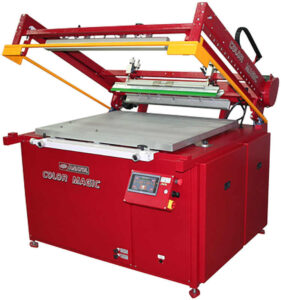

Revolutionizing the screen printing industry through cutting-edge technology and quality service
Anatol Equipment Manufacturing Co.
1429 S Shields Dr
Waukegan, IL 60085


Revolutionizing the screen printing industry through cutting-edge technology and quality service
Anatol Equipment Manufacturing Co.
1429 S Shields Dr
Waukegan, IL 60085

Looking to expand your screen printed offerings? Glass and ceramic substrates could be the way to go! If you’re currently offering screen printed garments, signs and other popular items, screen printing on glass and ceramics could provide you with an avenue for business growth. While screen printing remains popular in its more traditional applications, more and more uses are being found for screen printed glass and ceramics.
You’re probably familiar with more screen printing applications for glass and ceramics than you realize. As you probably know, drinking glasses, coffee mugs and water bottles are ever popular as branding merchandise, whether to promote a business or special event. But with large format screen printing presses, screen printing is used to print on glass window panels, doors, tiles and mirrors, either for business signage or decorative and architectural purposes.
There are also ample commercial uses for screen printing on glass and ceramics. Screen printing is popular for placing logos and labels on cosmetic and medical bottles. On a larger scale, screen printing is used to print defrosting elements, and even antennas, on car windows.
There are special considerations when screen printing glass and ceramic substrates, since few glass and ceramic substrates are the size and shape of more traditional screen printed products. Curved substrates may require special screen printing presses that adapt to their shape. Printing on large glass or ceramic items, like panels or large tiles, requires a printer built for the job, such as a flatbed printer.

Anatol’s Color Magic graphic flatbed screen printing press
is perfect for larger flat substrates like glass panels.
Inks are another consideration when printing on glass or ceramic. As with any type of screen printing, there are different ink options, though printing on glass or ceramic does require specialty ink formulated for the job. Screen prints on glass and ceramics have to be durable, as the substrate doesn’t absorb any of the ink. For lighter applications that won’t take a lot of abuse, epoxy inks are often used. These inks cure with time, though often exposing them to high temperatures can quicken the process. For more durable prints, such as those needed for dinnerware, ceramic inks are used. These inks contain small particles of glass that bond when superheated to form a lasting application.
Successful screen printing on glass and ceramic substrates isn’t just about using the right machinery and the right inks. It can be a tricky process that takes some research and experimentation. Because the inks are designed to air dry, they can dry quickly on the screens. When printing larger applications, screen tension can pose an issue. Because larger screens usually have lower tension, printing on glass may require a larger off contact. Glass and ceramic surfaces are also slippery and tricky to print on. Cleaning them well and warming them before printing can help the process.
If you’re ready to grow your business by offering new products and services, printing on glass or ceramic substrates, whether for marketing or branding or commercial applications, can help you to increase sales with current customer and appeal to new ones.
Looking for some other ways to expand your screen printed offerings beyond shirts? Check out these blog posts:
Grow Your Screen Printing Business by Expanding Your Product Line
Expand Your Screen Printing Horizons with Hats and Posters
Your message was successfully sent!